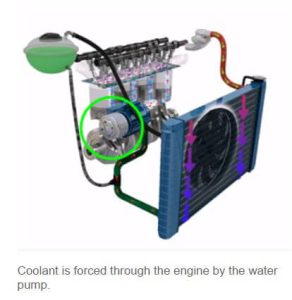Coolant Exchanges in Your Vehicle
Coolant Exchanges - When to Change
When do you recommend Coolant exchanges?
First, lets make sure we address what coolant is and what its purpose is. Coolant is a liquid or gas that is used to remove heat from something. The engine's cooling system is filled with coolant/antifreeze which have a lover freeze point and higher boiling point than water. It is forced through the engine by a water pump and absorbs the heat generated by the combustion process, then returns to the radiator. Air passes over the radiator, and heat is transferred from the coolant to the air, lowering the temperature of the coolant so that the cycle can start again.How can it fail?
Coolant with depleted corrosion inhibitors allows internal cooling system parts such as the inside of
the radiator or hoses to be corroded, leading to potential leaks and the buildup of gels inside the
system. This can result in overheating and potentially serious engine damage.
There are four simple tests you can do to check your coolant:
It is important that these tests are performed when the engine is cool.- Visual Test
- Hydrometer - check the gravity of your coolant
- Multimeter Test
- PH Test
 Vehicle's cooling system[/caption]
We recommend you change your coolant every 24 months or 30,000 miles. Learn more about the services we provide here at V&F and the recommend maintenance schedule to follow.
Vehicle's cooling system[/caption]
We recommend you change your coolant every 24 months or 30,000 miles. Learn more about the services we provide here at V&F and the recommend maintenance schedule to follow. 